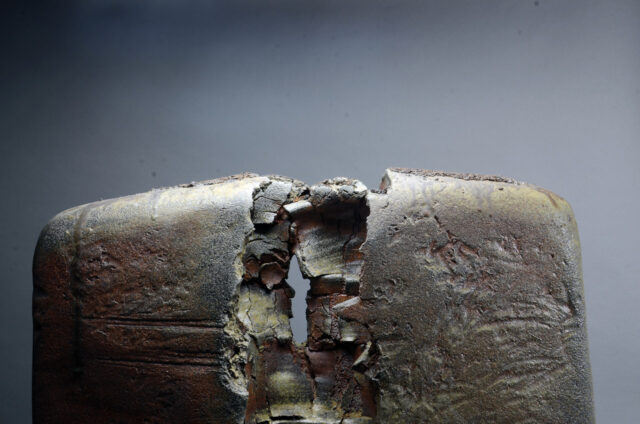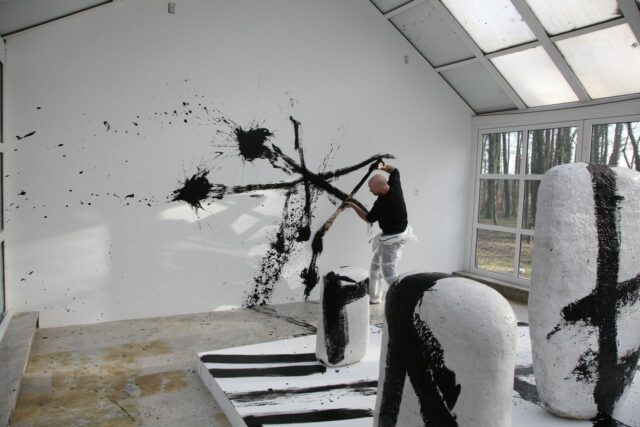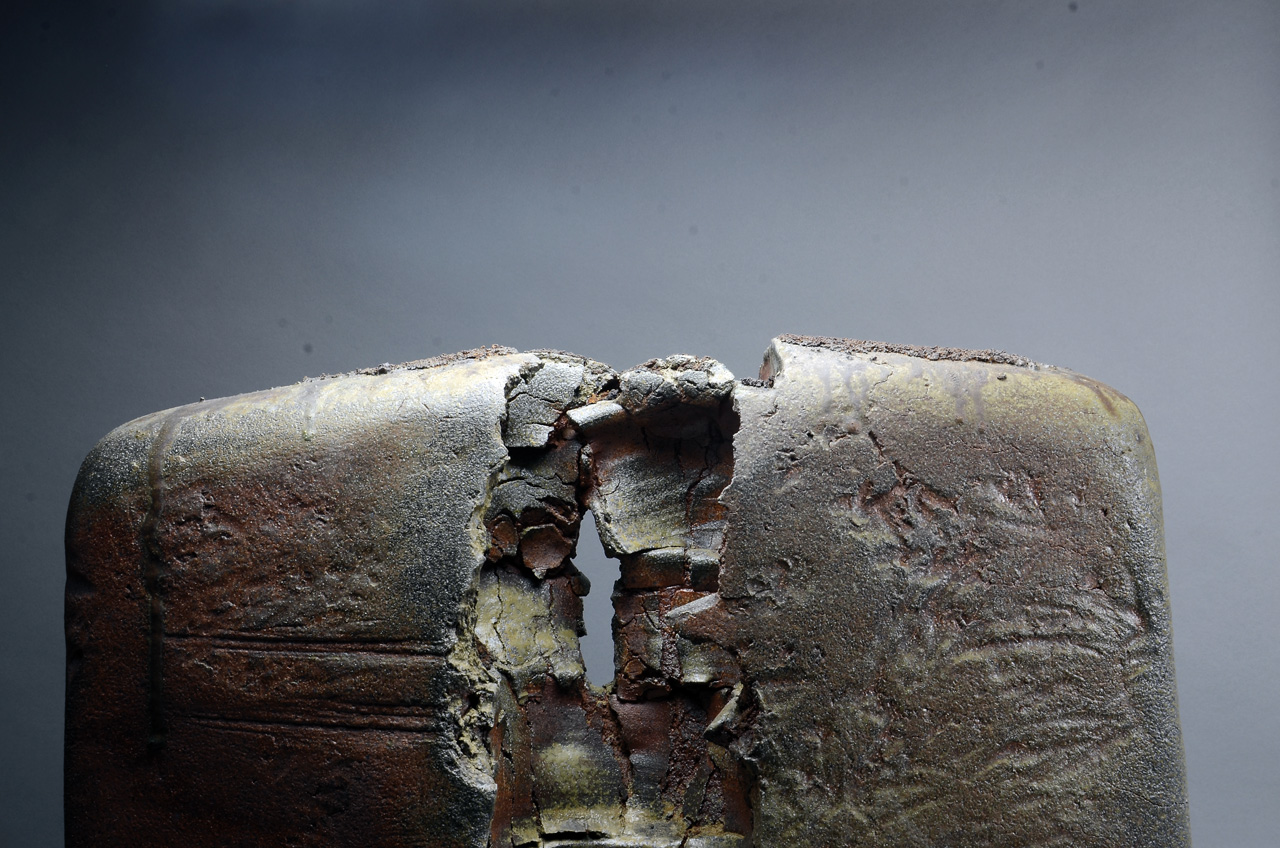


Out of the earth and fire
Michał Puszczyński
Out of the Earth and Fire is an exhibition of works by Michał Puszczyński, a pioneer of Far Eastern ceramic firing methods on the Polish art scene. The artist makes sculptures and installations, using ceramics as his main medium.
The exhibition at the Orangery Gallery opens a series of shows collectively titled Out of the Earth and Fire and presenting sculptures created between 2020 and 2023.
Immediately after the exhibition at the Centre of Polish Sculpture in Orońsko, the artist’s works will be on show at the Wałbrzych Art Gallery BWA, and then at the Centre céramique contemporaine La Borne in France.
The première exhibition consists of two projects arranged to correspond with the spatial division of the gallery. On display in the west wing of the Orangery are sculptures from the series Landscape of the Scorched Earth, created during a Fulbright scholarship at Northern Arizona University in the USA, and recent works created in Poland. They were all made using a unique Far Eastern wood firing technology, where temperatures sometimes exceed 1,350 degrees Celsius and the whole process is brought to a point bordering on loss of control over matter. The individual objects bear individual traces of fire and the melted ash gives their surfaces a volcanic character. Subjected to extreme firing, the ceramic works with their elusive anthropomorphic aspect exude an aura of decay. Establishing a dialogue with the nature of matter, Michał Puszczyński consistently subjects it to erosion and disintegration, with the attributes of fire, ash and clay becoming his means of expression.
For more than 20 years in Poland and abroad, the artist has been exploring the possibilities offered by firing ceramics with wood, thanks to which he is able to give his abstract objects a uniquely expressive character. The shapes of the sculptures - reminiscent of architectural elements, fragments of enigmatic objects, anthropomorphic stelae or deformed heads - create an impression of an eclectic lapidary and refer to both the motif of vanitas and the wabi-sabi aesthetic. Alongside influences from the Far Eastern culture, references to dystopian trends in contemporary art can also be found in Puszczyński’s work.
The east wing of the Orangery includes sculptures from the Expansion series, realised at the European Ceramic Workcentre in the Netherlands as part of a grant from the Ministry of Culture and National Heritage.
The series consists of monolithic, abstract white forms covered with expressive black marks and planes. The artist gives them the function of canvases for action painting realised in the gallery space. He covers the surface of the sculptures with traces of dynamic and impetuous brushstrokes, thus alluding to abstract painting, understood as an experimental and processual medium. The expansion of painting into objects and space evokes associations with the most ancient origins of this form of expression. Combining calligraphic influences with elements of action painting and abstract expressionism in his works, he creates unique pieces that evoke stage sets or stage arrangements.
Michał Puszczyński consistently follows his individual trend of using earth/clay and fire, united under the form of ceramics, in sculpture and installation. He invariably refers to forms that exist in nature, especially those marked by the effects of time, bearing the traces of prolonged contact with water, wind and rapid changes in temperature, eroded and decaying, crumpled, marked by cracks and scratches. He finds inspiration on the surface of dried, cracked earth, in fossils, in nature’s subservient ruins or rust delaminating metal surfaces. These forms show the continuous process of the flow of matter in nature, where the end simultaneously becomes the beginning of a new iteration of being, while the ascetic nature of Puszczyński’s objects reminds us of the primordial forces of this world. The austere aesthetic of his works creates a space for contemplation, while at the same time formulating fundamental, existential questions about transience and time. The exploration of creation processes undertaken by Michał Puszczyński in search of authentic answers pushes the limits of expression achievable in ceramics.
Dr Michał Puszczyński (b. 1976) graduated from the Academy of Fine Arts in Wrocław, where he works at the Faculty of Ceramics and Glass and the Faculty of Sculpture and Art Media. He participated in numerous exhibitions, symposia, projects and artist residencies in Europe, the USA and Asia. He is a pioneer of Far Eastern techniques for firing ceramics with wood, and in 1999 built the first Anagama (Tongkama) kiln in Poland.
Winner of, inter alia, the Award of the Marshal of the Silesian Voivodship for Young Artists; scholarship holder of the Young Poland Programme, the Minister of Culture and National Heritage, Fulbright Senior Award; member of the International Academy of Ceramics (IAC).
He served as an advisor to the European Ceramic Workcentre (EKWC). His sculptures can be found in private and public collections in Poland and abroad.












